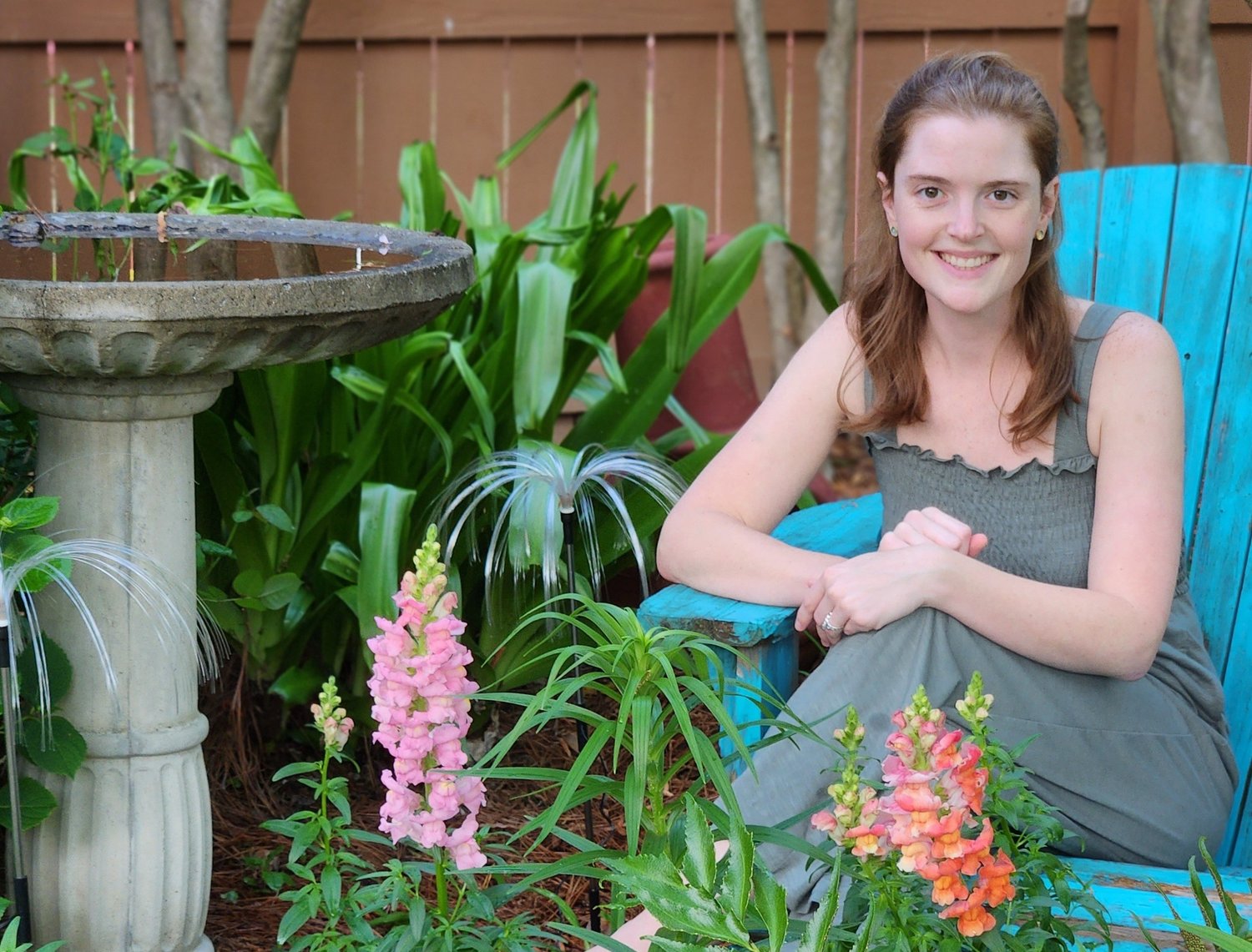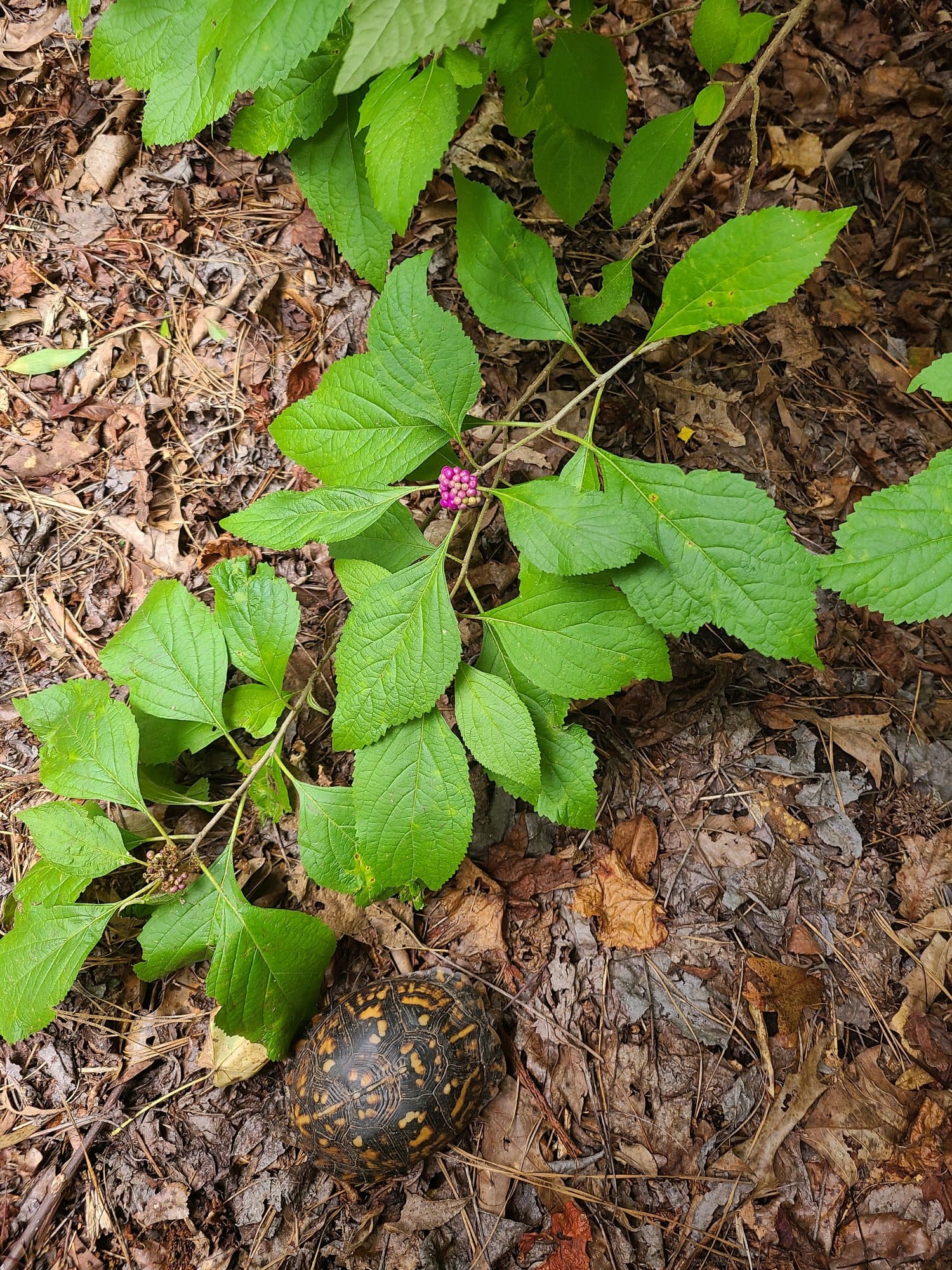
Keep South Carolina Wild
May 29, 2024
All images by Savannah Jordan
As we near the end of Garden for Wildlife™ Month, SCWF’s very own Habitat Education Manager, Savannah Jordan shares her story about why she gardens for wildlife and offers inspiration from her own wildlife habitat at home.

Savannah Jordan, SCWF Habitat Education Manager
“I create my garden not just for the wildlife that will enjoy it, but for the people who will see it and be inspired by it, learn from it, or find peace from it. ”
— Savannah Jordan
When I first discovered my love of birds, it changed the way I thought about plants. It also changed how I garden. Who knew that a single chickadee pair needed hundreds of caterpillars per day to feed their growing nestlings? By planting certain native host plants that those caterpillars need to eat from, I can then provide those chickadee parents with plenty of food for their chicks. It’s this kind of thought process that I needed to change my perspective on how I garden for wildlife. I started doing it for the birds, because I love seeing all the different species visit my yard and find refuge there. But it didn’t stop there.
A garden is a sanctuary for wildlife and a sanctuary of my own. It’s in the garden, or anywhere out in nature, that I’m able to breathe the deepest and find a great deal of peace. There’s just something about digging in the dirt that helps clear your mind. During a time when we feel the constant pressure to go, go, go and always be on the move or face-down in our phones and laptops, it’s important to take time to slow down, look around you and simply just be. Notice the little things that typically go unnoticed, like the beautiful song of the Carolina wren, the way the morning sunlight peeks through the leaves on the trees, glistening raindrops on flower petals, or how those tiny warblers hop from branch to branch in search of insects to eat. Our gardens can be a relaxing place to experience nature, and when we can open them up to others, it’s one of the greatest gifts we can give.
Since having my son almost 10 months ago, one of my greatest wishes is for him to grow up with a love of nature just as strong as mine. I used to garden to fulfill my own desire to watch what I’ve created flourish, but now it goes way beyond that. Now I get that plus the joy of watching my son grow and one day learn all these new things such as how a caterpillar turns into a butterfly. I will get to see the delight in his eyes when he sees tiny new sprouts popping out of the soil from seeds he planted, and then his joy will become my own. I want him to be a good steward of the bounty we have been given on this earth, and this can all start right in our garden.
For wildlife to thrive, they need the essential elements: food, water, cover, and places to raise their young. Gardens with these elements can support twice the amount of wildlife! Every habitat garden is a step toward replenishing resources for wildlife such as bees, butterflies, birds, and amphibians. Learn more about how to certify your wildlife habitat through the National Wildlife Federation.


Arranging plants in groups by color is one way to make your garden really stand out. In this picture we have purple coneflower and yarrow. I also like to mix in different shades of the same color that are complimentary to one another, and this yarrow naturally already has light and dark shades of pink that act as a pretty accent for the coneflower.
Being intentional about what we plant in our gardens is key to creating the right habitat for wildlife. Aim to have 75% of your garden include natives, because it’s native plants that are most beneficial to our wildlife and sustain many of our native animal species more than non-native plants. They feed the caterpillars, and caterpillars feed birds and many other wildlife. Native plants also require less watering and no fertilizer, which is healthier for the environment and saves money and water! Pictured right is an American beautyberry bush and an Eastern box turtle, two native species that call my garden home.

“There are many things we would all like to change in the world, but feel powerless to do so. By adding native plants to our garden, we can make an immediate impact. ”

FOR IMMEDIATE RELEASE South Carolina Wildlife Federation’s Annual Wild Summer Nights Online Auction to Support Conservation and Education Programming Begins Thursday, July 13, 2023 The South Carolina Wildlife Federation (SCWF)...

Congratulations to the winners of our 2021 Photo Contest! We had great participation this year, with nearly 400 amazing entries. It is always difficult to choose winners because we have...

Thank YOU to the South Carolina Wildlife Partnership (SCWP) for facilitating last weekend’s dove hunt with our Academics Afield students from Clemson University. We truly appreciate SCWP working with the...